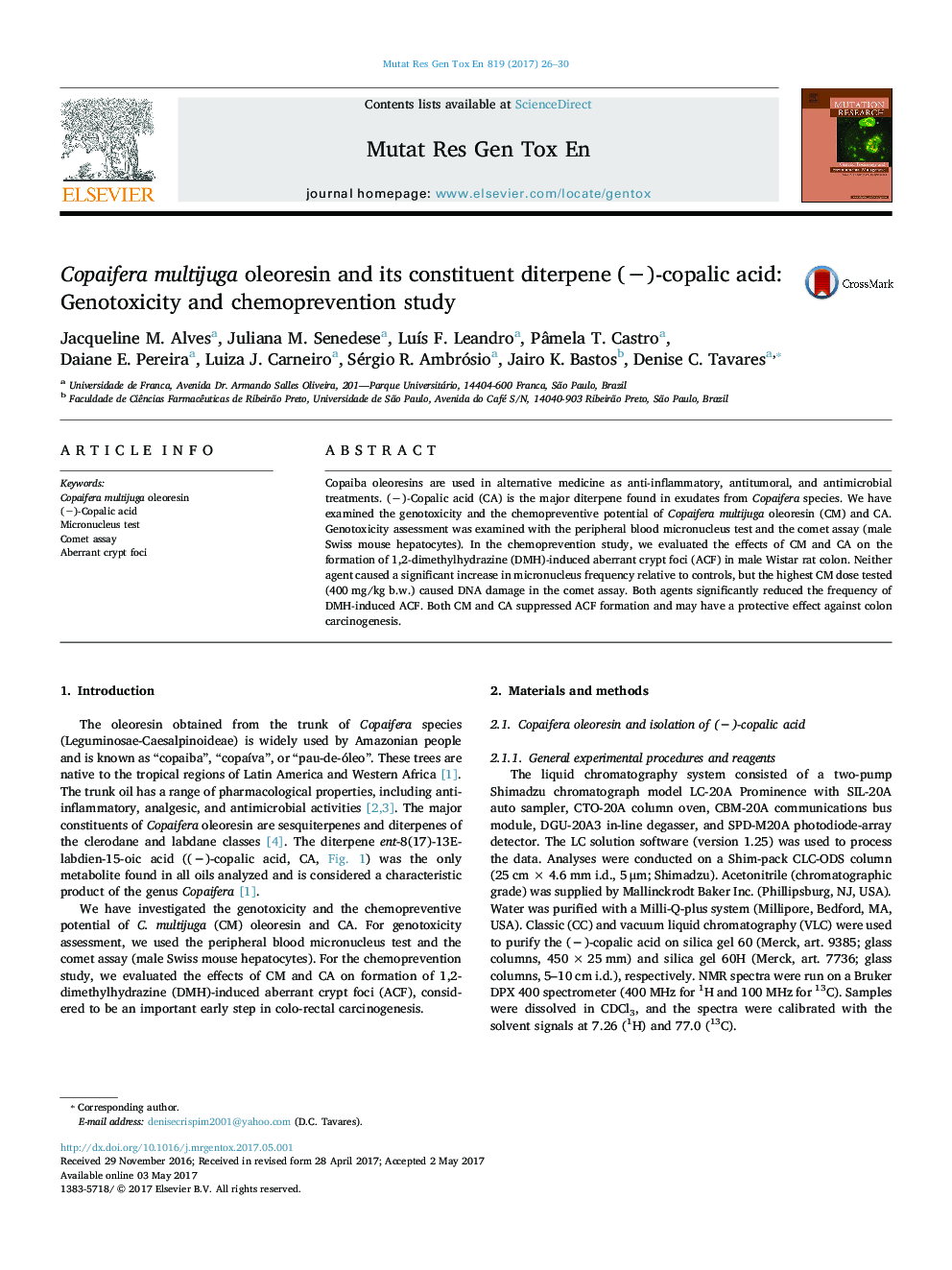| کد مقاله | کد نشریه | سال انتشار | مقاله انگلیسی | نسخه تمام متن |
|---|---|---|---|---|
| 5528823 | 1548552 | 2017 | 5 صفحه PDF | دانلود رایگان |

- Copaifera multijuga oleoresin displayed genotoxic activity at highest dose evaluated by the comet assay.
- No genotoxic effect was observed for Copaifera multijuga oleoresin and (â)-copalic acid by the micronucleus test.
- Copaifera multijuga oleoresin and (â)-copalic acid have a protective effect against colon carcinogenesis.
Copaiba oleoresins are used in alternative medicine as anti-inflammatory, antitumoral, and antimicrobial treatments. (â)-Copalic acid (CA) is the major diterpene found in exudates from Copaifera species. We have examined the genotoxicity and the chemopreventive potential of Copaifera multijuga oleoresin (CM) and CA. Genotoxicity assessment was examined with the peripheral blood micronucleus test and the comet assay (male Swiss mouse hepatocytes). In the chemoprevention study, we evaluated the effects of CM and CA on the formation of 1,2-dimethylhydrazine (DMH)-induced aberrant crypt foci (ACF) in male Wistar rat colon. Neither agent caused a significant increase in micronucleus frequency relative to controls, but the highest CM dose tested (400Â mg/kg b.w.) caused DNA damage in the comet assay. Both agents significantly reduced the frequency of DMH-induced ACF. Both CM and CA suppressed ACF formation and may have a protective effect against colon carcinogenesis.
193
Journal: Mutation Research/Genetic Toxicology and Environmental Mutagenesis - Volume 819, July 2017, Pages 26-30